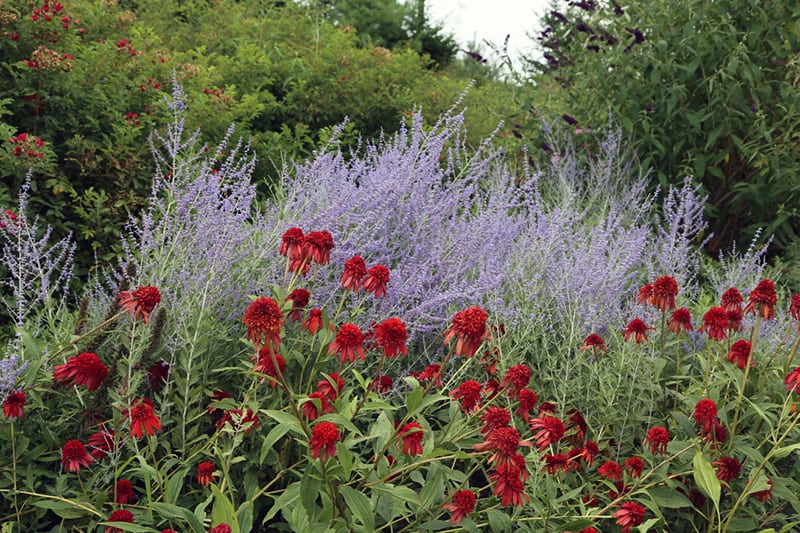Name: Perovskia atriplicifolia aka Russian sage
Type of Plant: Perennial plant for full sun and well drained soils. It has woody stems so doesn’t usually get cut to the ground.
Why I Love/Hate this plant: I love Russian sage because it has a long period of bloom, it’s upright to about 4 feet tall but not massive, and the critters usually leave it alone. I often pick the stems for bouquets, and the flowers are a lovely lavender-bule color that blends well with other flowers in the perennial garden.
A Word to the Wise: Grow this plant in well-drained soil and in full sun. If you’re smart, you’ll plant these in groups of 3, 5, 7 or more plants, spaced about two feet apart. Russian sage is most striking when planted in a large group.
Russian sage looks great with shrubs and perennials that have larger, rounded flowers or foliage. The contrast between the fine flowers and leaves of the Perovskia and the other plants is always stunning.
On the Cape it’s good to leave to leave this plant in the garden all winter – the grayish-white stems are pretty, and the base of the plant usually puts out new growth in the spring. In May, cut tops off and leave bottom 18 inches to 2 feet, where you should see new growth at that time of year.

Russian sage looks best when planted in larger groups. Here it’s great with pink-spirea (finished flowering) to the left and Rosa rugosa on the right. All growing well in full sun and well-drained soil. Russian sage has a wind-swept look that’s great with plants that are more upright and stiff.

Russian sage looks great on the top of stone walls. The fine texture of the Perovskia is the perfect contrast with large, solid stones.

Don’t overwater Russian sage. Do plant it in full sun. And do use it for cut-flowers in July and August.


0 Comments